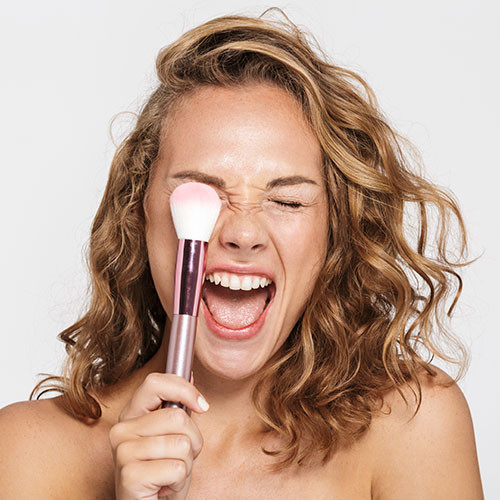How To Prime Skin To Perfection
Posted by Skin Elite on Oct 28th 2020
Ever wondered how some seem to have makeup that is immaculately and flawlessly applied? The answer is in the primer.
While beauty brands have sold primers for what seems like forever, priming skin for makeup application can still seem daunting.
There are many different primer options on the market. How do you know which is best for your skin? Do you want a mattifying, blurring, brightening primer, or something different?
Then there’s the application. What’s the best way to apply a primer for that smoother-than-smooth faultless application?
If you’ve been avoiding primer because of all the complexities it may introduce to your makeup routine, it’s time to change that. While it may take a teeny bit of learning to understand the best practices for applying primer under makeup, we’re here to help. You’ll wonder how you ever made up your face without it.
What Is Primer?
Primer is exactly how it sounds. It’s a makeup product applied to your skin to prepare it ready for the application of makeup. A primer creates a smooth canvas that hangs onto whatever makeup you apply afterward. This could be a foundation, tinted moisturizer, concealer, or another product.
Makeup primers come in all different forms to address various skincare issues. Are you suffering from dry and thirsty skin? Then you may require a primer packed full of hyaluronic acid for an extra dose of hydration.
Or maybe you want to smooth and blur any fine lines? In that case, a traditional silicone-based primer is an excellent choice.
Today, many options are available, and many primers offer plenty of other benefits aside from smoothing the skin ready for application. Primers can also brighten the complexion, fade fine lines and wrinkles, reduce acne, and add extra moisture. The question is - what can’t primers do?
If you’re wondering whether you need a primer, unless you’re completely happy with the look of your skin and makeup application, the answer is usually a big, resounding yes. If there’s something that feels off or missing when you peer into your reflection in the mirror, a primer may be exactly what you need.
How Do I Apply Primer?
Primers are applied after your last skincare step (such as moisturizing) and before your makeup. To apply primer to your complexion, don’t be shy about using your fingers. It’s the most effective and easiest way to blend the primer into your skin to achieve a seamless and glowing finish.
A makeup brush drags the primer around the face. If you’re a germaphobe, consider using a Beautyblender sponge.
Apply lightly and sparingly, and be sure to give your primer a full minute to sink into the skin before packing any makeup on top. Control the primer's spreading with your fingers to make sure it doesn’t pile up or gather anywhere on the skin. Remember, when it comes to primers, less is often more.
Which Primer Do I Use?
As mentioned, there are a ton of different primers available on the market, so you’ll need to decide what skincare issues you’re hoping to address.
If you want to reduce redness or boost radiance, opt for a color-correcting primer. If you desire to reduce the appearance of fine lines and wrinkles, choose a primer with smoothing and blurring effects. One option that’s suitable for all types of skin is Dermalogica’s Skinperfect Primer. The solution smooths fine lines while brightening and priming the complexion for effortless makeup application.
The texture is smooth and velvety, using soy protein help even out skin texture. Wear alone over your day cream or following moisturizer and before foundation application.
What About the Eyes?
There are also primers explicitly designed for the eyes. As the eye area is so delicate, it requires a different formula than skincare primers. Revitalash’s Aquablur is a primer and eye gel that’s gentle and hydrating on the skin. The gel can be used with or without makeup to protect and smooth the eye area while promoting the health of the eyebrows and lashes. How’s that for a multi-tasking makeup product?
What Should I Avoid?
Like with any kind of makeup application, there are some easy mistakes to make when choosing and applying primer. Selecting a primer that works for your skin is vital. After all, you wouldn’t use a primer for dewy skin if you already have an oily complexion, would you?
When choosing a primer, be sure to compare the issues you have for your skin (or what you’d like to improve) with what the primer addresses.
It’s also essential to find a primer that’s an excellent match for your foundation. When a primer and foundation don’t team up well, you may be left with thick, cakey-looking makeup with plenty of patchy spots. We’re sure that’s not exactly what you had in mind for a flawless makeup application.
If you can, test primers in person so you can check how the two products will mesh. If testing isn’t available, speak to someone working behind your favorite makeup counter for advice.

